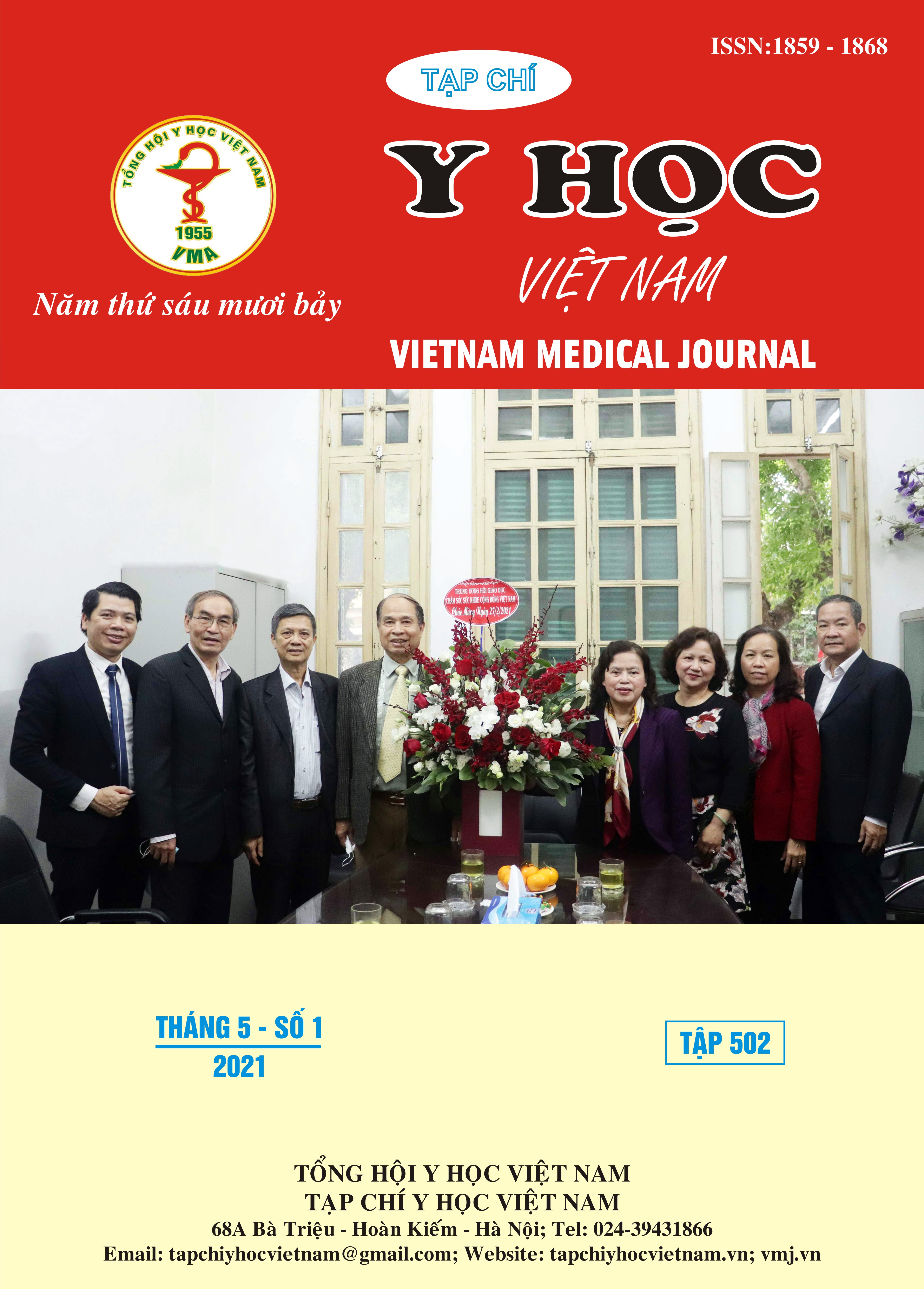INVESTIGATE THE RELATIONSHIP BETWEEN THE OUTCOME AT DISCHARGE AND SOME STROKE SCALES OF PATIENTS WITH A NON-CARDIAC ISCHEMIC STROKE
Main Article Content
Abstract
Objective: To evaluate risk factors, clinical characteristics and some stroke scales of the patients with a non-cardiac ischemic stroke and the relations between outcome and some stroke scales. Subjects and methods: 159 patients with non-cardiac ischemic stroke for the first time treated at the Department of Stroke, Military Hospital 103 from June 2020 to January 2021. They admitted to the hospital during the first 7 days. Results: Risk factors: age ≥ 55 83.6%, male 64.8%, hypertension 51.6%, diabetes 11.9%, lipid disorder 26.4%, obesity 15.7%, smoke 29.6% and drink alcohol 30.4%. The scale at admission: the average of GCS 14.41 ± 2.31, GCS = 15 was 74.2%; the average of NIHSS was 7.47 ± 5.80 the NIHSS < 5 was 39.6% and the average of ASPECT was 7.87 ± 1.39, and the ASPECT > 7 was 71.7%. At discharge, the average of mRS was 2.19 ± 1.338, mRS ≤ 2 was 72.3%. There was a correlation between the level of outcome according to the mRS with the GCS OR = 3 (1.5-6.8) (p = 0.002), NIHSS OR = OR = 7.2 (2.8 – 18.2); p < 0,01) and ASPECT OR = 2.3 (1.1-4.7) (p = 0.029). However, when analyzing multivariate logistic regression, only NIHSS had correlation with mRS (r <0.001) and could be used to predict the level of outcome.. Conclusion: The GCS, NIHSS and ASPECT scales were associated with outcome according to the mRS. However, only the NIHSS was able to predict the outcome at discharge
Article Details
Keywords
ischemic stroke, outcome, mRS, NIHSS, GCS, ASPECT
References
2. Boehme Amelia K., Esenwa Charles, and Elkind Mitchell S.V. (2017). Stroke Risk Factors, Genetics, and Prevention. Circulation Research, 120(3), 472–495.
3. Lindsay M.P., Norrving B., Sacco R.L., et al. (2019). World Stroke Organization (WSO): Global Stroke Fact Sheet 2019. Int J Stroke, 14(8), 806–817.
4. Feigin V.L., Krishnamurthi R.V., Parmar P., et al. (2015). Update on the Global Burden of Ischemic and Hemorrhagic Stroke in 1990-2013: The GBD 2013 Study. NED, 45(3), 161–176.
5. O’Donnell M.J., Chin S.L., Rangarajan S., et al. (2016). Global and regional effects of potentially modifiable risk factors associated with acute stroke in 32 countries (INTERSTROKE): a case-control study. Lancet, 388(10046), 761–775.
6. Kissela B.M., Khoury J.C., Alwell K., et al. (2012). Age at stroke: Temporal trends in stroke incidence in a large, biracial population. Neurology, 79(17), 1781–1787.
7. Phạm Phước Sung (2019), Kết quả điều trị nhồi máu não trong giai đoạn từ 3 đến 4,5 giờ bằng thuốc tiêu huyết khối Alteplase liều thấp, Luận án tiến sĩ, Trường Đại học Y Hà Nội.
8. Nguyễn Quang Ân, Nguyễn Minh Hiện, Nguyễn Hoàng Ngọc, et al. (2018). Nghiên cứu mối liên quan giữa đặc điểm lâm sàng và hình ảnh cắt lớp vi tính ở bệnh nhân Đột quỵ nhồi máu não cấp trong 6 giờ đầu kể từ khi khởi phát. Tạp chí Y - Dược học quân sự, 4, 84–92.
9. Đoàn Vũ Xuân Lộc, Nguyễn Thanh Thảo, Hoàng Minh Lợi, et al. (2014). Ứng dụng thang điểm ASPECTS trong tiên lượng sớm dự hậu đột quỵ nhồi máu não cấp. Tạp chí Y Dược học - Trường Đại học Y Dược Huế, 22 + 23, 169 (9).


